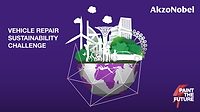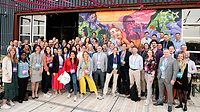Dow Announces Carbon Challenge Results

MIDLAND, MI – Dow and the U.S. Green Building Council (USGBC) shared the results of their inaugural Carbon Challenge to mark the one-year anniversary of the project’s announcement. The challenge received a total of 63 entries across 16 cities in Northern Asia covering about 7.5 million square meters. Jointly, these 63 buildings saved 38,000 metric tonnes of carbon dioxide equivalent (CO2e) year over year, and greenhouse gas (GHG) emissions were reduced on average more than 2% year over year, based on the calculations used in Arc.
Dow’s collaboration with USGBC began in January 2018 with the goal to engage building owners and measurably reduce GHG emissions through improved energy efficiency in buildings. The Carbon Challenge was announced in June 2019 to recognize large office buildings and shopping centers in North Asia that reduced their carbon emissions and improved energy efficiency.
“Science and collaboration play a key role in solving some of our world’s largest challenges. We are thrilled to partner with an organization like USGBC that is committed to improving the resilience, sustainability and quality of life in buildings, cities and communities around the globe,” said Dr. Hirokazu Shibata, Technology & Sustainability Leader for Asia Pacific at Dow Olympic & Sports Solutions. “Carbon innovation needs wider adoption of locally-relevant solutions for a successful transition to a more sustainable society. The Carbon Challenge has helped identify and recognize best practices and learnings from top performing buildings that can help inform new construction in the region.”
Awards were presented in October 2019 at Greenbuild China 2019 to seven of the submitted projects across three tiers that were considered top contributors. The joint initiative with USGBC not only encouraged carbon emissions reductions in the built environment sector, but also presented winners with an opportunity to contribute their carbon savings to Dow’s Carbon Partnership with the International Olympic Committee (IOC).
“Every part of the world is experiencing first-hand the consequences of climate change, and it’s on all of us to help accelerate the reduction of greenhouse gas emissions,” said Andy To, Managing Director at USGBC North Asia. “Buildings are one of the largest energy-consuming sectors in the world and are responsible for approximately one-third of global carbon emissions. We are proud of our ongoing collaboration with Dow and the impressive results of our first Carbon Challenge, which reinforce the industry’s commitment to a sustainable built environment.”
While every action, however minute, toward reducing carbon impact in the built environment is vital, the industry has its work cut out for it. The energy intensity per square meter of the global building sector needs to decrease by 30% on average by 2030 (compared to 2015) to be on track to meet global climate ambitions set forth in the Paris Agreement. Dow’s own Sammy Hui, Senior Business Development Leader, Building & Construction, based in Hong Kong, understands this and has made it his mission to advance sustainable innovation in the industry. He was separately awarded by USGBC at the Greenbuild China 2019 event with the Greenbuild Leadership Award for sustainability leadership.
“As increased urbanization continues to put pressure on the building industry, it’s critical to consider the importance of early design decisions on the sustainability of the entire built environment,” said Hui. “Solutions currently exist to reduce emissions, and we saw many of them utilized by winners of the Carbon Challenge. As a total solution provider for the entire building envelope, Dow products such as IGU secondary seal and silicone structural glazing directly contribute to energy efficiency improvement.”
The Carbon Challenge evaluated merits during a one-year period based on Scope 1 – direct emissions from owned or controlled sources – and Scope 2 – indirect emissions from the generation of purchased energy. The challenge was open to office buildings and shopping centers that were 20,000 square meters or larger situated in Japan, South Korea and Greater China – including mainland China, Taiwan, Hong Kong and Macau. All data were calculated using the same calculations as the Arc system and verified by USGBC.
Dow’s Carbon Partnership with the IOC was initiated in September 2017 to balance the operational carbon footprint of the IOC and beyond. The partnership encourages organizations outside the Olympic movement to adopt programs for reducing carbon emissions while catalyzing change across value chains through a series of impactful carbon mitigation projects. Dow’s collaboration with USGBC is one of several projects executed by Dow and the IOC around the world as part of the carbon partnership program. Dow is also a Worldwide Olympic Partner and the Official Chemistry Company of the Olympic Movement.
Looking for a reprint of this article?
From high-res PDFs to custom plaques, order your copy today!







